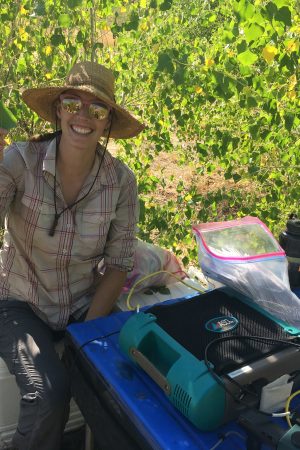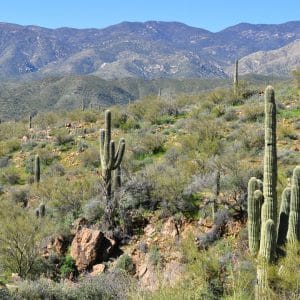Alum Wes Swaffar has forged a unique partnership between the National Forest Foundation, where he is reforestation and partnership director, and Anheuser-Busch. Every purchase of the company’s newest brew will go towards reforestation in National Forests across the US. For his work on forest restoration, he’s also the company’s first #Cervezas4YourService honoree – Congrats Wes! Read more at the Missoulian.
News
How will riparian ecosystems respond to the future? Maybe the past can tell us.

School of Earth & Sustainability professor Rebecca Best, along with Co-PIs from the Department of Biological Sciences at NAU and the Merriam-Powell Center for Environmental Research , have received a new NSF grant to study the evolutionary origins and ecological consequences of “flexibility” in the way cottonwood… Read more
The Art of Water Wells
NAU Alum Marvin Glotfelty, RG has published a new book on the conservation of groundwater. Available from the National Ground Water Association Press, the book “provides practical information on water wells—covering everything from site selection to design, drilling methods, economics, and more—and is written in a fashion that is understandable, technically accurate, and applicable to real-world situations.”
What plants move the fastest in response to a changing climate?
 NAU faculty in Biological Sciences and the School of Earth and Sustainability have recently published research showing that plant traits such as plant height and dispersal ability have impacted their ability to move across the landscape in response to 10,000 years of changing climate conditions. How can we know this about the past? Packrat middens! Read the NAU News story or… Read more
NAU faculty in Biological Sciences and the School of Earth and Sustainability have recently published research showing that plant traits such as plant height and dispersal ability have impacted their ability to move across the landscape in response to 10,000 years of changing climate conditions. How can we know this about the past? Packrat middens! Read the NAU News story or… Read more
Recent global warming outpaces climate changes of the past 2,000 years
SES researchers Michael Erb, Nick McKay, and Darrell Kaufman are part of a global effort to bring together all possible data about past climate variability, providing a better baseline to evaluate recent anthropogenic change. Their latest work in Nature Geoscience shows that no matter how you look at it, our current actions are causing exceptionally rapid change. Read the story in NAU News or jump straight to the paper.
Research Scientist Matt Johnson explains the tension between introduced beetles and endangered birds
Intentionally introduced tamarisk beetles do a great job of beating back invasive tamarisk along Arizona’s rivers, but what does this mean for the habitat available to endangered flycatchers? Matt Johnson explains the need for follow-up plantings of native trees and shrubs to fill the hole left by the beetles. Read the AP story here.